by Irma Havlicek
Powerhouse Museum Online Producer
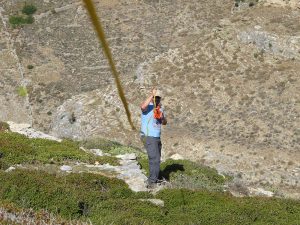
Each team is assigned to a particular grid, and that grid has to be marked out with measuring tape or string, attached to stakes that have already been placed in the ground to mark the corners of the grids. The purpose of the tape or string, is to make clearly visible what is the boundary of the grid you are working on, so that any artefacts you find in that grid can be bagged and marked with which grid it came from. This means that as the findings of each grid are researched, clearer information about the whole site emerges.
The photos give you an indication of the challenges involved in marking out the grid: sometimes you have to take the tape or string over the prickly Holme bush (which can involve walking through/over the prickly stuff), or over rock piles. Sometimes the grid is on steep ground (with precipitous drops not far away). Sometimes, you are marking the grid in such fierce wind, that it takes all your strength to just hold on to your end of the tape.
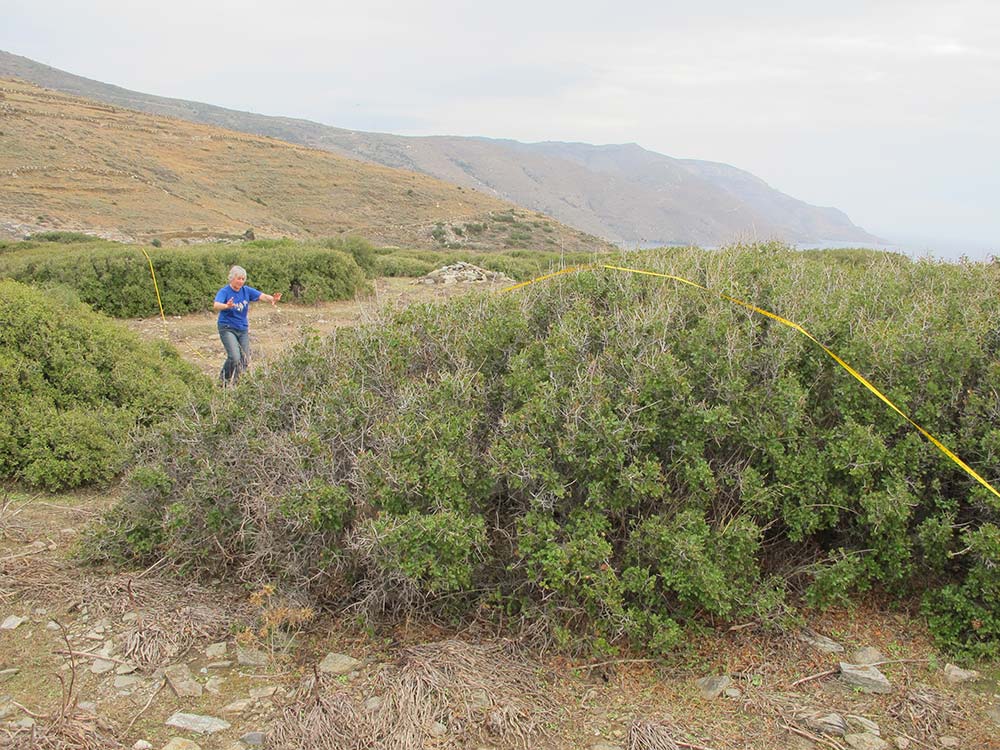
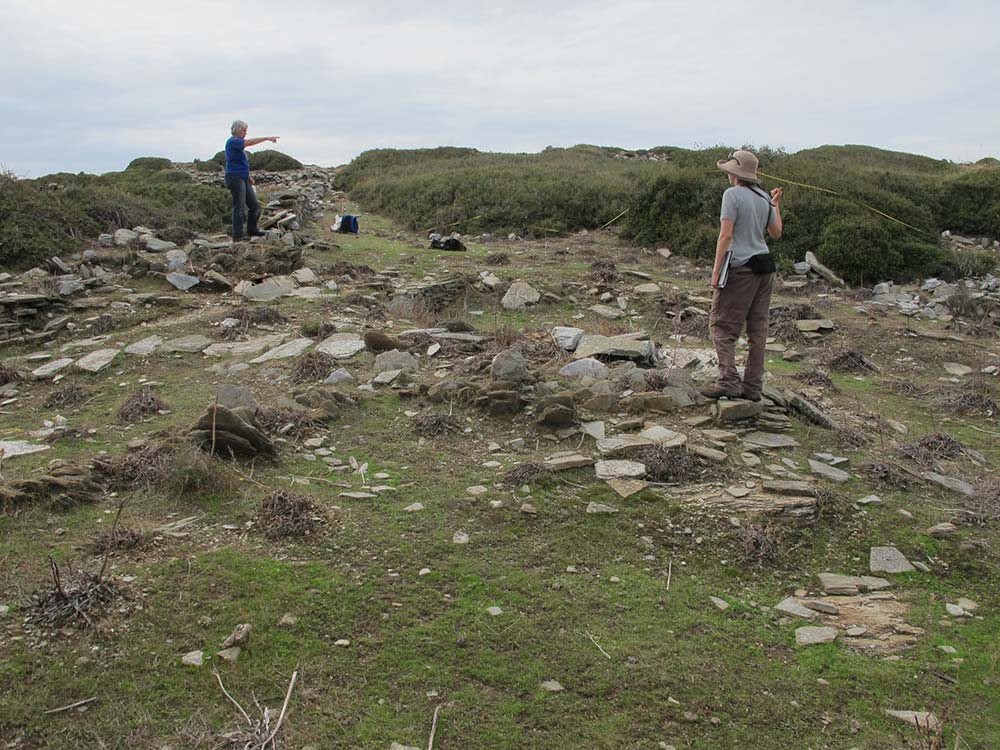
And, among all the high-tech of other parts of our work, to secure the tape to the ground, we place rocks on the tape or wrap tape around rocks.
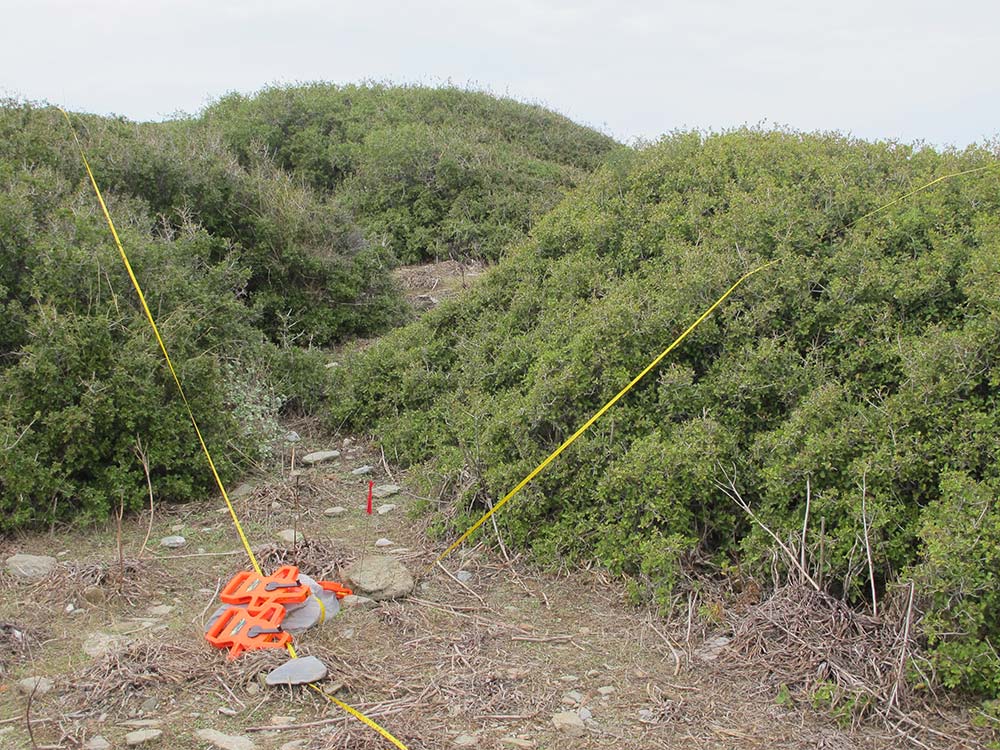
How we work once we have marked out the grid depends a little on the nature of the grid. If it is fairly flat and unobstructed by rock piles and bushes, we walk along in a straight line from one side to the other, looking at the ground to see if we can see anything of significance such as a sherd of pottery on the ground. If we see something, we collect it and place it in a plastic bag, then continue walking along the line. When we get to the end of the grid, we walk back to the beginning, and start walking the line again, further along this time, and we repeat that, working next to our one or two team-mates, until we have completed the grid. If the grid is more uneven or obstructed, we may work more in ‘areas’ of the grid rather then straight lines. But whichever way we do it, we are careful to survey every part of the ground within the grid.
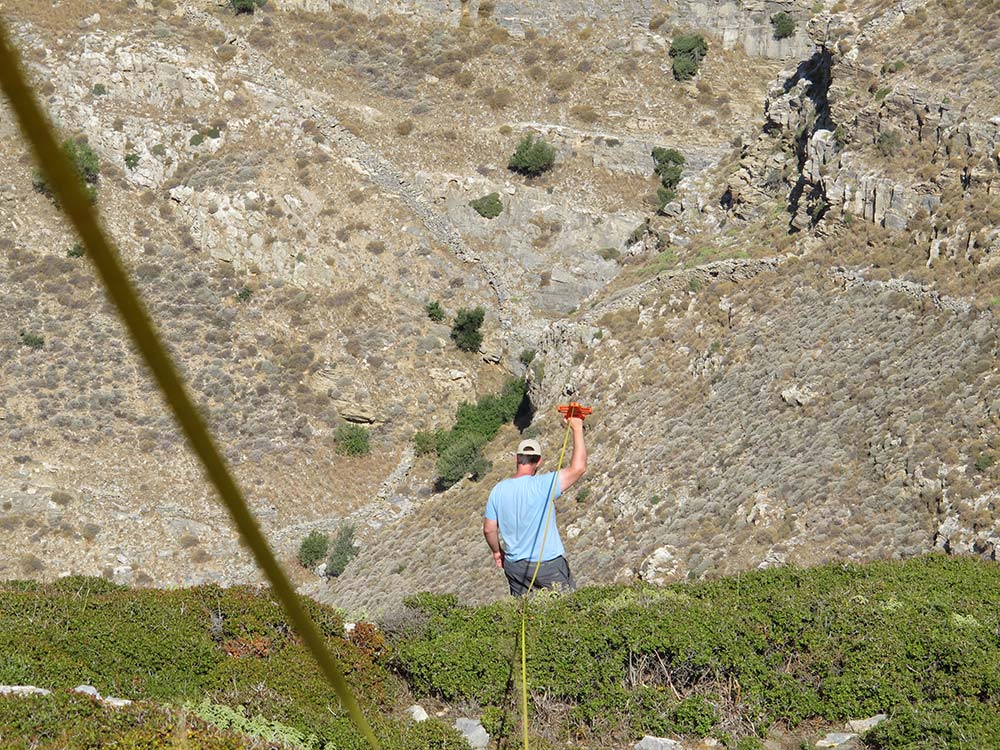
Often we then rework the grid, walking in the opposite direction, as the light and shadows are different working from the opposite direction and sometimes you can see things you missed walking the other way.
We do this for as long as it takes to thoroughly visually survey the grid.
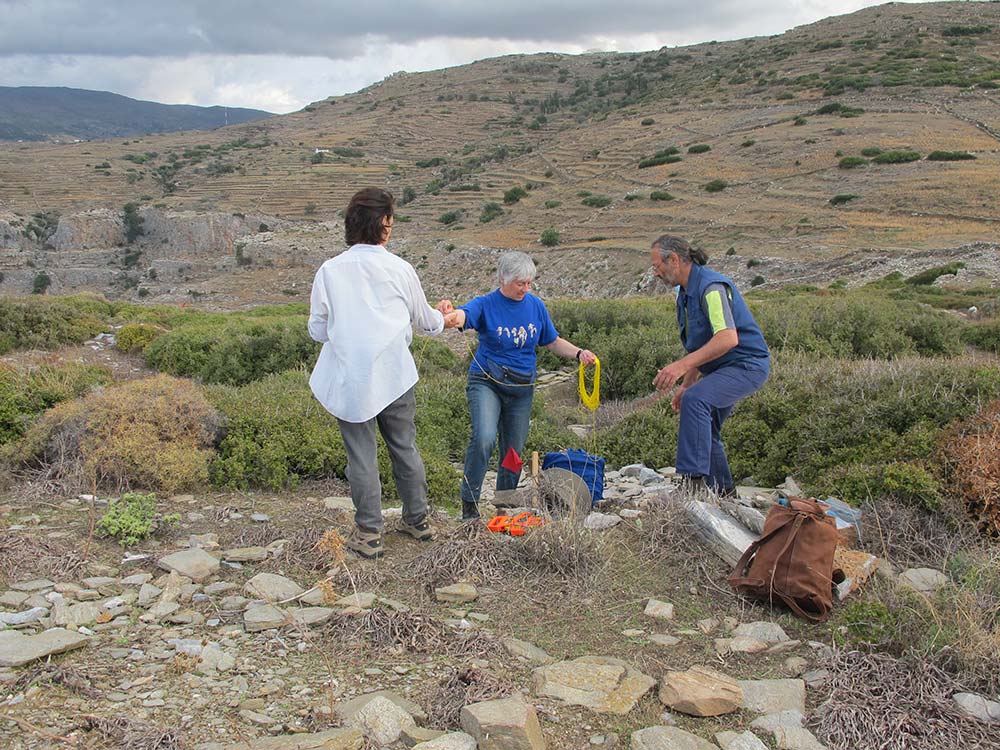
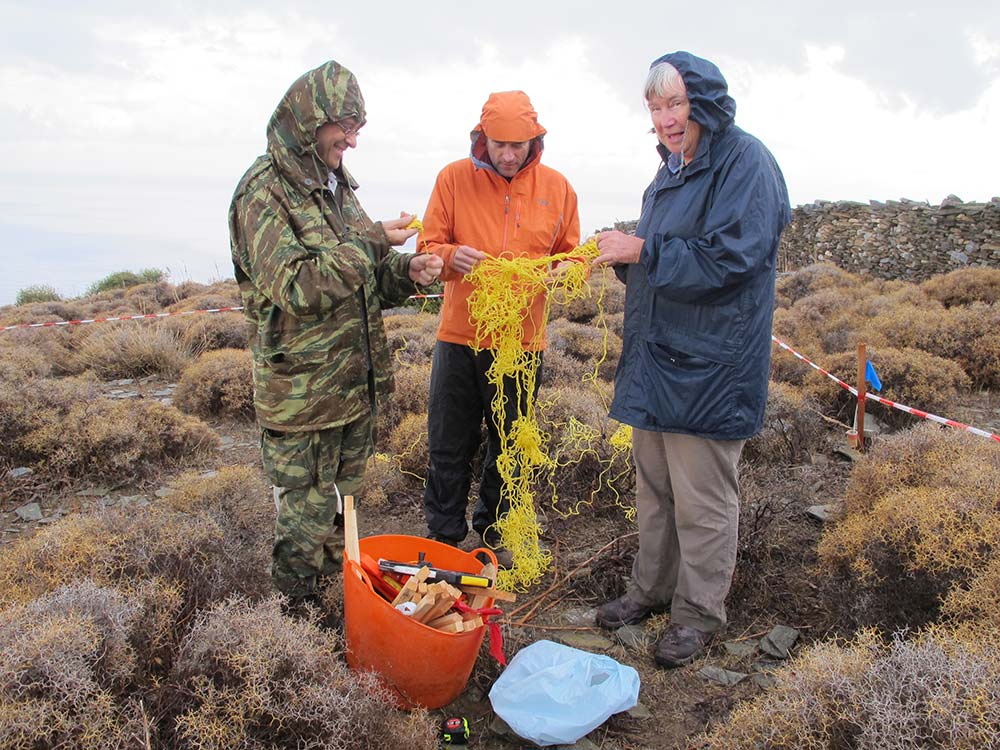
© PHM; photo by Irma Havlicek
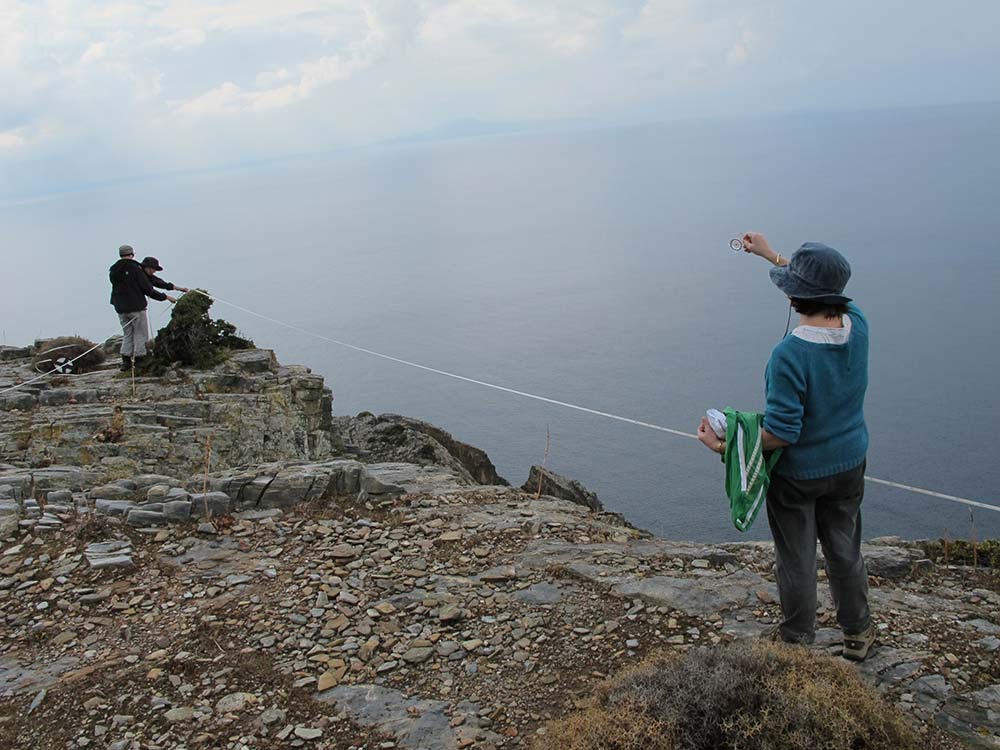
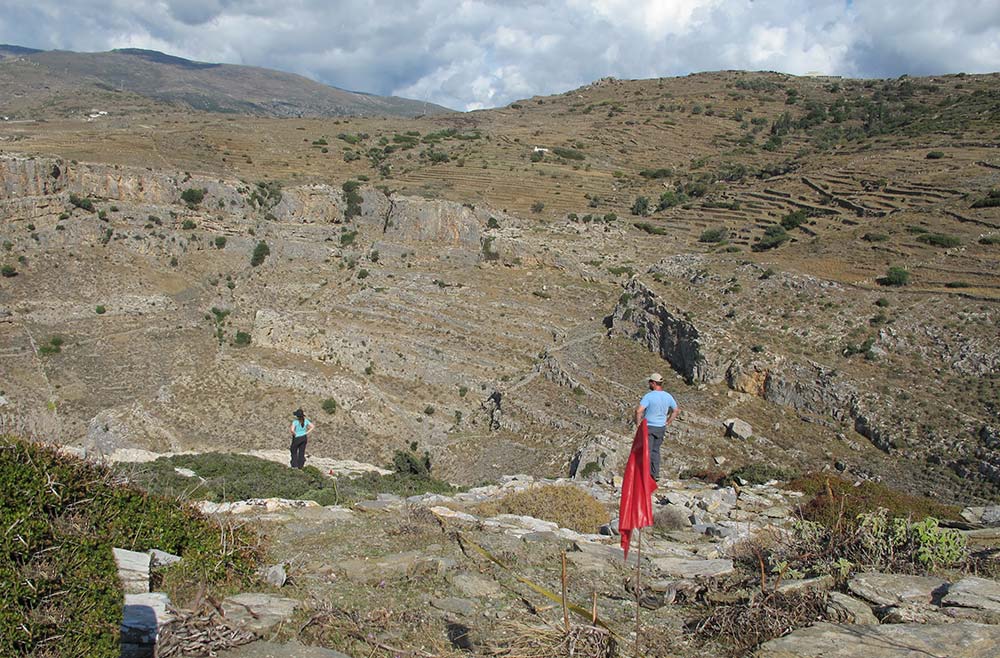
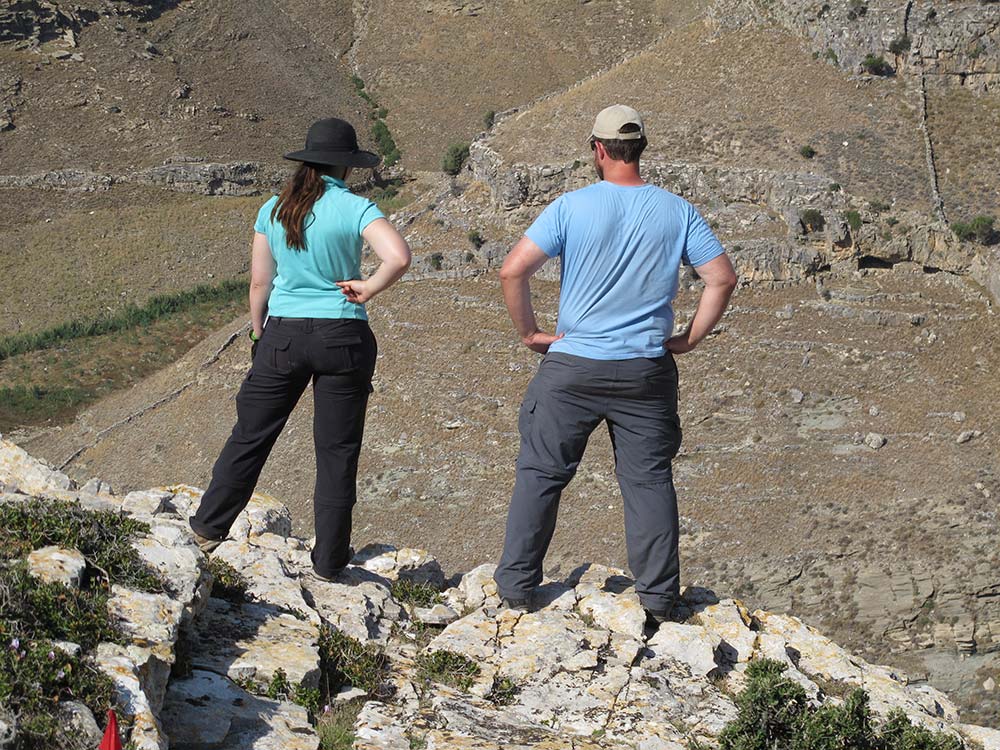
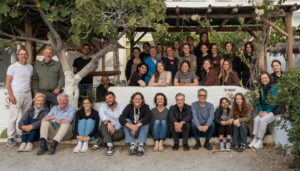
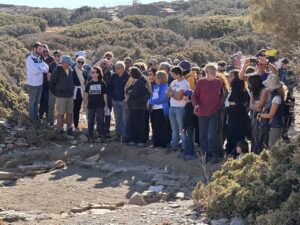
10 thoughts on “Of tape and string: the grid’s the thing”
Haha, Great pics…
Thanks, Wayne. Helped along by an incredibly photogenic environment.
Hi Irma
Sounds like hard work but good fun. BTW tonight around 8pm local time the waning gibbous Moon will be rising in the constellation of Taurus the Bull. Just above it will be the very bright planet Jupiter. Weather permitting it should be a great sight over the water if that cliff face in the above image points east?
Regards
Geoff of the Obs
Thanks, Geoff…. (Geoff is a colleague of mine who is Senior Astronomy Educator at Sydney Observatory.) I’ll try to look out for that, and tell the others. I’ll try to remember to let you know if we see it. Cheers.
Hey Geoff – just to let you know, we all went out (a little later, so Jupiter was a little higher) but we saw Jupiter above and to the right of that waning gibbous Moon. I think everyone, including the Greek people who run this pensione/cafe, really enjoyed seeing it, and knowing that the bright light was Jupiter. So thanks for the heads up about it.
Don’t let Stavros wander off alone. You may never find him again!
There appears to be a mistake in one of the photo captions. It says “Stavros Paspalas, Paul Donnelly and Meg Dains disentangle the string spaghetti.” but I can only see Paul and Meg!!! Where is Stavros?
Mmmm, will have to look into that…. or perhaps write a book: ‘Where’s Stavros?’
I am just reading through the early days of your site report and this brought back memories of what we would call ‘fieldwalking’ around Silchester which I did as part of my History/Archaeology degree at Reading. Andros is my favorite greek island and I am sure the people of Batsi will make you feel welcome as they have with us over the years (although things will now be fairly quiet following the end of the holiday season there). Looking forward to reading more.
Hi Fiona
Thanks for your comments. Did you work as an archaeologist after your study?
The people of Batsi have certainly made us feel welcome – the kindness, warmth and generosity have been simply fantastic. We will really miss them. And the food! I plan a post on the food down the track….
Our field season here at Zagora for this year comes to an end in a week, so posts will not be so frequent after that (though I still have a few posts planned for coming weeks). We are hoping to return in 2013 and 2014, so our blog presence would increase again then. But I’ll be monitoring comments to the blog, and can reply (or ask archaeologists on your behalf) if you have any questions. We’ll let you know via this blog when we know about possible future archaeological seasons here.